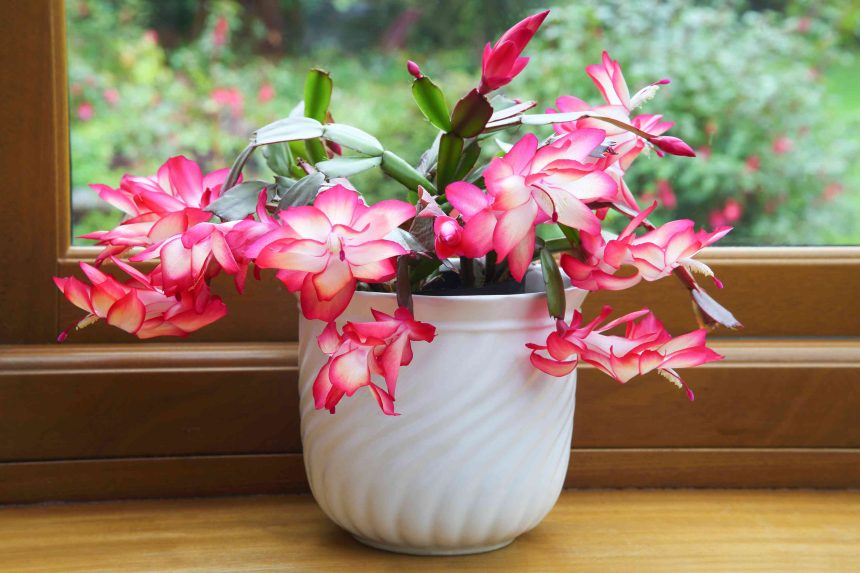This time of year, the Christmas cactus is a natural choice for houseplant enthusiasts. It’s known for brightening up the winter with its signature vibrant pink blooms from November to January, hence its name.
With proper care, you can ensure these beloved blooms will return year after year. Even if your Christmas cactus seems perfectly content, there’s an often overlooked yet critical care step you shouldn’t be neglecting if you want to maintain the health of your plant.
Learn how and when to properly fertilize a Christmas cactus, with tips directly from a gardening pro.
Meet the Expert
Jennifer Cassels is president of The Blissful Place luxury outdoor feature store.
Do You Need to Fertilize Christmas Cactus?
When we think of basic houseplant care, watering and pruning are often the most top-of-mind tasks. Over time, houseplants deplete the nutrients in their soil, which can leave them looking drab or unhealthy. Even a repotting session may not be enough to replenish a lack of essential nutrients found in soil like magnesium, phosphorus, or nitrogen. Luckily, this is an issue that can easily be fixed by regular fertilization.
Though Christmas cactus can grow without regular fertilization, providing nutrients during their active growing phases is key for healthier growth and maintaining those vibrant annual blooms we love.
“For the Christmas cactus to flower and grow vigorously, it is necessary to fertilize the plants regularly,” says Jennifer Cassels, president of The Blissful Place luxury outdoor feature store. “Although they do not require constant nutrition, fertilization does support their nutrient needs, especially during active growing and blooming phases.”
Want more gardening tips? Sign up for our free gardening newsletter for our best-growing tips, troubleshooting hacks, and more!
How and When to Fertilize Christmas Cactus
Nadezhda_Nesterova / Getty Images
Cassels suggests using a balanced, 20-20-20 water-soluble fertilizer specifically for houseplants, but diluting it to 50% strength to avoid burning the plant.
To use a water-soluble fertilizer, fill a watering can according to the label’s instructions, but only mix in half of the recommended amount of fertilizer. Pour the diluted solution onto the soil around the base of your cactus, ensuring the soil is evenly moistened, just as you would for a routine watering.
As far as timing, Cassels recommends fertilizing monthly from spring to late summer when the cactus is actively growing. While it may seem counterintuitive, halt feeding after late summer to encourage flower bud development as fall approaches; active fertilization outside of the growing phase can actually be detrimental to the plant.
Other Tips to Keep Your Christmas Cactus Thriving
Though it’s a desert plant, bright, indirect sunlight and a warm environment (70–80°F) is best for Christmas cacti for most of the year. Cassels emphasizes that darkness is actually equally as important as adequate light when it comes to bud formation for your Christmas cactus.
To help with setting buds, she advises moving the plant to a cooler room (around 50–55°F) and placing it in a spot where it will get 12–14 hours of uninterrupted darkness at night for 6–8 weeks. After buds begin to form, you can then return it to normal lighting and temperatures. Once buds do form, you should increase humidity by placing it on a pebble tray or setting a humidifier nearby.







